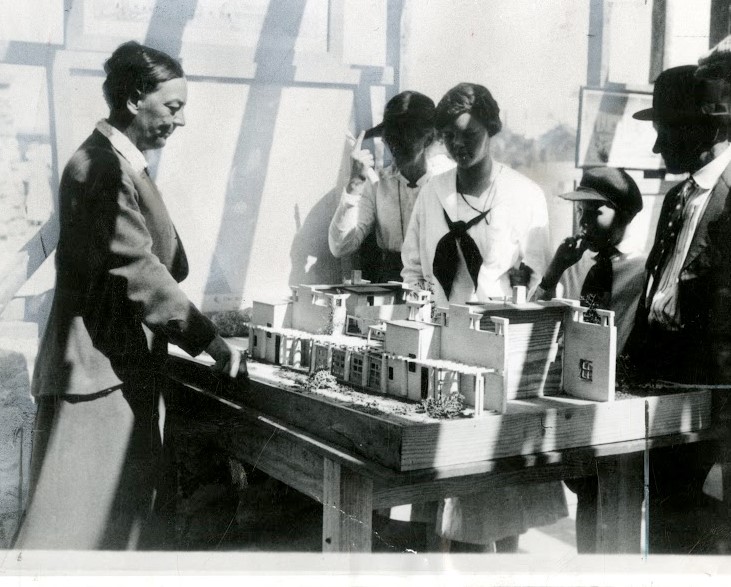Among a slew of books from the University of Chicago Press that arrived last week was a slim little tome with a title reversed out of a bright red band at the top:
“Your Guide to Downtown Denise Scott Brown,” it read in all caps.
Standing below the title was an iconic image, circa 1965, of the indefatigable architect and planner herself, hands on hips, legs astride a broken-white, highway line – with the Las Vegas Strip looming in the background.
She’s young, she’s smiling and she’s looking at the camera with defiance.
“Bob took it – I stood there with my hands on my hips like I owned the place, like Robert Moses,” Scott Brown says. “Young women are taking up that pose now – it’s a power pose, and an upbeat thing to do.”
As is her new book, a guide to understanding a recent Austrian exhibition that explores her worlds. It offers an entirely new way to view her achievements as an architect, urban planner, theorist, and educator.
“It’s all about a universe,” she says. “I live in a very wide world, geographically and otherwise, like being a woman architect and being married to Robert Venturi.”
The book takes readers through her childhood in 1930s South Africa and her education in 1950s England, to her well-known work in photography, her writings and studies, and her work as an architect and urban planner on four continents.
As Venturi’s wife, she ran into no small amount of challenges. “Jim Polshek, head of Columbia School of Architecture called once about a dinner at the Century Club given by Philip Johnson,” she says. “He said: ‘You’re an architect but we’re inviting no wives, and you’re a wife.’”
Venturi took issue with Johnson on another front altogether, spelled out clearly in the book. Taking his cue from the House Committee on Un-American Activities, he once announced that “I am not now nor have I ever been a Postmodernist and I unequivocally disavow fatherhood of this architectural movement.”
“He said that because of Philip Johnson making a mockery of what we were doing,” she says. “Johnson made all the money and became a very rich man, but in the end that was his only victory.”
The book notes that somehow, Denise was never called the mother of Postmodernism.
That may be true, but this woman knows how to make a stand.
For more, go here.
[slideshow id=2040]



